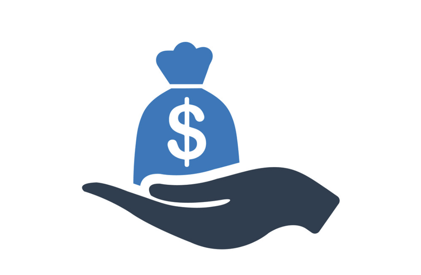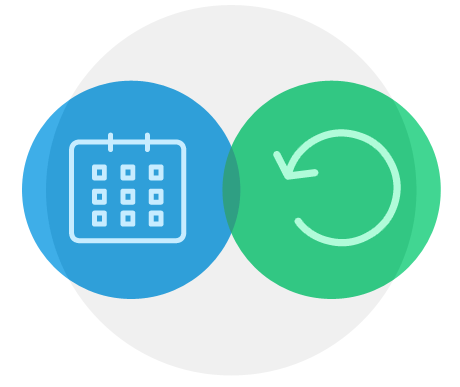The subscription business model has established itself as the new standard. Subscriptions have been accepted by organisations of all sorts, from disruptive startups to conventional corporations, for the promise of open-ended recurring revenue. In the previous blog we discussed the various models for subscription business. In this blog we will look at how those subscription firms can track their success.
Metrics like revenue growth, client acquisition expenses, production costs, and gross profit margins may be used in a typical business model with a one-time sale or a perpetual licence. However, the subscription business model necessitates a separate set of indicators for tracking and monitoring the company's health. Let's take a look at six critical KPIs to consider while running a subscription business.
1. Monthly Recurring Revenue
 This is one of the crucial statistics to keep an eye on, since it will play a significant role in your profitability calculations. The monthly recurring revenue (MRR) is simply the amount of money you have at the end of each month. Divide the subscription price by 12 to normalise income to the month - or two if paid biannually, and so on.
This is one of the crucial statistics to keep an eye on, since it will play a significant role in your profitability calculations. The monthly recurring revenue (MRR) is simply the amount of money you have at the end of each month. Divide the subscription price by 12 to normalise income to the month - or two if paid biannually, and so on.
MRR= Number of Subscribers x Monthly subscription plan
You want MRR to increase over time as you track it. This indicates that you are adding consumers at a good pace and that your customers aren't terminating their subscription in large numbers.If your MRR begins to flatten, it suggests you're losing consumers at the same rate as you're gaining them. At this time, your focus should be on recruiting clients quickly and lowering the turnover rate.
2. Annual recurring revenue
You can quickly calculate your annual recurring revenue (ARR) once you've sorted out MRR. This is the annual income from a subscription. Annual recurring revenue (ARR) is calculated by multiplying MRR by twelve to get an annual figure. ARR is largely used by businesses to forecast future revenue and visualise its size.
Annual recurring revenue = Monthly recurring revenue x 12
This statistic is useful for comparing year-over-year trends and establishing growth targets.
3. Churn Rate
Expect some churn as a business: the amount or percentage of customers that cancel a subscription within a payment month. While a low churn rate is desirable, big surges in churn might indicate that something needs to be changed. A strong subscription business should constantly be gaining consumers rather than losing them.
In the digital publishing industry the churn rate should be between 3-5% if the publisher has been proving service for a long time. You can see high churn rates like 5-10% if the company just launched their subscription model or if the engagement is falling. The primary elements that lead to churn must be examined. It's always difficult to forecast because a variety of internal and external factors might influence it. Depending on how consumers cancel their subscriptions, you can try to collect data on their reasons for leaving, which you can utilize for analysis and future client retention measures.
4. Renewal Rate

The renewal rate is calculated by dividing the total number of subscriptions renewed by the total number of subscriptions due for renewal over a certain time.
In a thriving subscription business, your renewal rate must be high enough to keep the whole business growing, whether in terms of total customers or income.
This number should always be more than 100 percent in a good subscription business. The renewal rate is an important measure for predicting future growth. Subscription businesses should often begin the renewal process at least 30 days in advance, although the chance of renewal is determined on the customer's overall experience throughout the subscription period. Plan ahead of time so you can conduct focused client encounters to maintain a strong renewal rate.
5. Customer lifetime value
The most essential measure for a subscription business is customer lifetime value (CLV). It represents a customer's complete revenue potential. Naturally, for a subscription business to be viable, the CLV must constantly be greater than the cost of client acquisition.
6. Customer acquisition cost
The key to a successful subscription business is to gain and keep more consumers. Customer acquisition must outpace turnover for growth, and profitability lies on the other side of the line if customer acquisition costs (CAC) are kept under control.
CAC is determined by averaging up all acquisition-focused sales and marketing expenditures and dividing by the total number of new customers for a given time period. Marketing spend vs acquisition numbers should be monitored to make sure that the marketing strategy is working efficiently.
To create and execute a plan that will drive growth and success, identify where to invest, when to invest, and where to cut back, precise and ongoing monitoring of operational performance is vital for all subscription businesses. The more precise your data, the more sophisticated you can get in determining the indicators that best serve your organisation and help you to make informed strategic decisions that drive your company ahead.
If you are a digital publisher and have a subscription business model or are planning to start one and looking for a subscription and identity platform to manage your customers more effectively contact us today to know more about how we can help you to unlock the true potential of your business.
